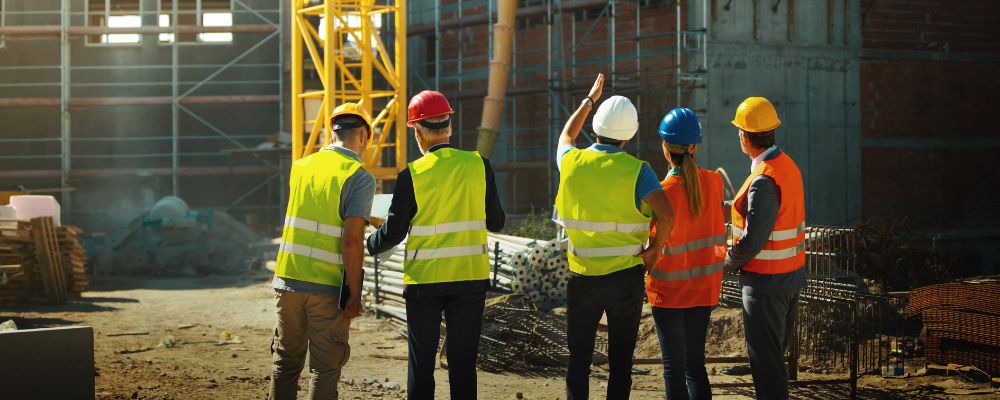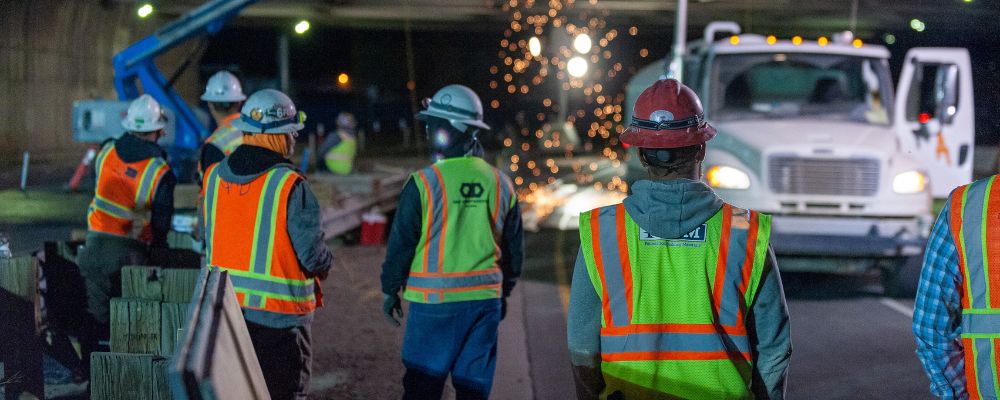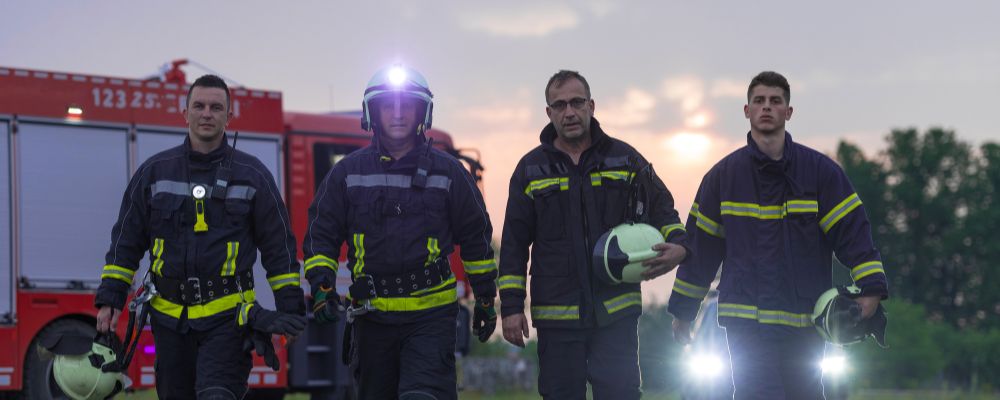High-visibility (hi-vis) workwear constitutes a pivotal aspect of occupational safety within the workplace, meticulously designed to enhance the visibility of workers on job sites. Employing vivid fluorescent colors alongside reflective materials, hi-vis apparel significantly reduces the risk of accidents in industries such as construction, road maintenance, and emergency services.
This article delves into the essential features of hi-vis workwear, underscoring its indispensable role in bolstering workplace safety and adhering to safety regulations.
Enhancing Visibility with Fluorescent Colors
The essence of high-visibility workwear is encapsulated in its use of vibrant fluorescent colors, designed to capture and reflect more light, thereby making workers instantly noticeable in daylight conditions. Fluorescent colors such as bright yellows, oranges, and reds are scientifically chosen for their capacity to stand out against natural backgrounds, significantly reducing the risk of accidents in busy or complex environments.

Illuminating the Night with Reflective Materials
As daylight fades, the reliance shifts towards materials that can reflect light in low-light and nighttime conditions. High-visibility workwear incorporates reflective (contrasting) tape that bounces back light to its source, such as vehicle headlights, effectively making the wearer visible in the darkness. This reflective tape is not merely an addition to the garment; it is strategically placed to outline the human form, making it recognizable to onlookers and drivers from a distance and at different angles.

Standards of Compliance and Classification
Grasping the compliance standards and classifications for hi-vis safety apparel is essential for worker protection.
In the United States, the ANSI/ISEA 107-2015 standard delineates hi-vis apparel into three classes based on visibility levels: Class 1 for minimal-risk areas, Class 2 for moderate-risk, and Class 3 for high-risk zones like roadway construction or emergency scenarios.
Similarly, in Canada, it adheres to the CSA Z96-15 standard. These regulations dictate specific criteria for materials, design, and visibility, ensuring maximal safety for workers.

Industry-Specific Specialty Features
To accommodate the distinct safety demands and environmental challenges of various sectors, hi-vis workwear integrates specialized features:
Flame-Resistant Hi-Vis Workwear: Crucial for fields such as oil, gas, welding, and firefighting, these garments offer visibility while protecting against fire hazards.
Material and Durability: Selecting robust materials like polyester or nylon is vital for enduring the daily wear and tear in harsh environments. Features like reinforced seams and durable zippers extend the lifespan of safety apparel.
Weather and Work Environment Considerations: The choice of hi-vis workwear should reflect the workplace's weather conditions. Options include insulated and waterproof hi-vis jacket offer supreme warmth for outdoor work in cold climates.

Customization and Adaptability
Customization in hi-vis workwear ensure that safety attire meets both the visibility requisites, while also accommodating branding needs. This is particularly advantageous for companies aiming to fortify their brand identity through their work appareal.
Conclusion
High-visibility workwear is indispensable in safeguarding worker safety and visibility across numerous industries. From construction zones and road maintenance to emergency services, hi-vis attire is crucial in mitigating workplace accidents and enhancing safety. The capacity for adaptability and customization in hi-vis vests, shirts, jackets, and other clothing highlights the sector's dedication to addressing the requirements of different work settings, promoting brand identity, and maintaining compliance with safety regulations.FAQs
What is high-visibility workwear and why is it important?
High-visibility workwear is clothing made from fluorescent material with reflective tape for maximum visibility. It's crucial for safety in workplaces like construction sites, road maintenance, and emergency services, reducing accidents by making wearers visible.
What are the different classes of high-visibility clothing?
According to the ANSI/ISEA 107-2015 standard, there are typically three classes based on visibility level: Class 1 offers the lowest visibility, Class 2 provides moderate visibility, and Class 3 ensures the highest visibility, especially in hazardous environments.
What are the future trends in high-visibility workwear?
Future trends focus on integrating smart technology for real-time safety monitoring and using sustainable materials and eco-friendly manufacturing processes to meet environmental responsibility goals.





